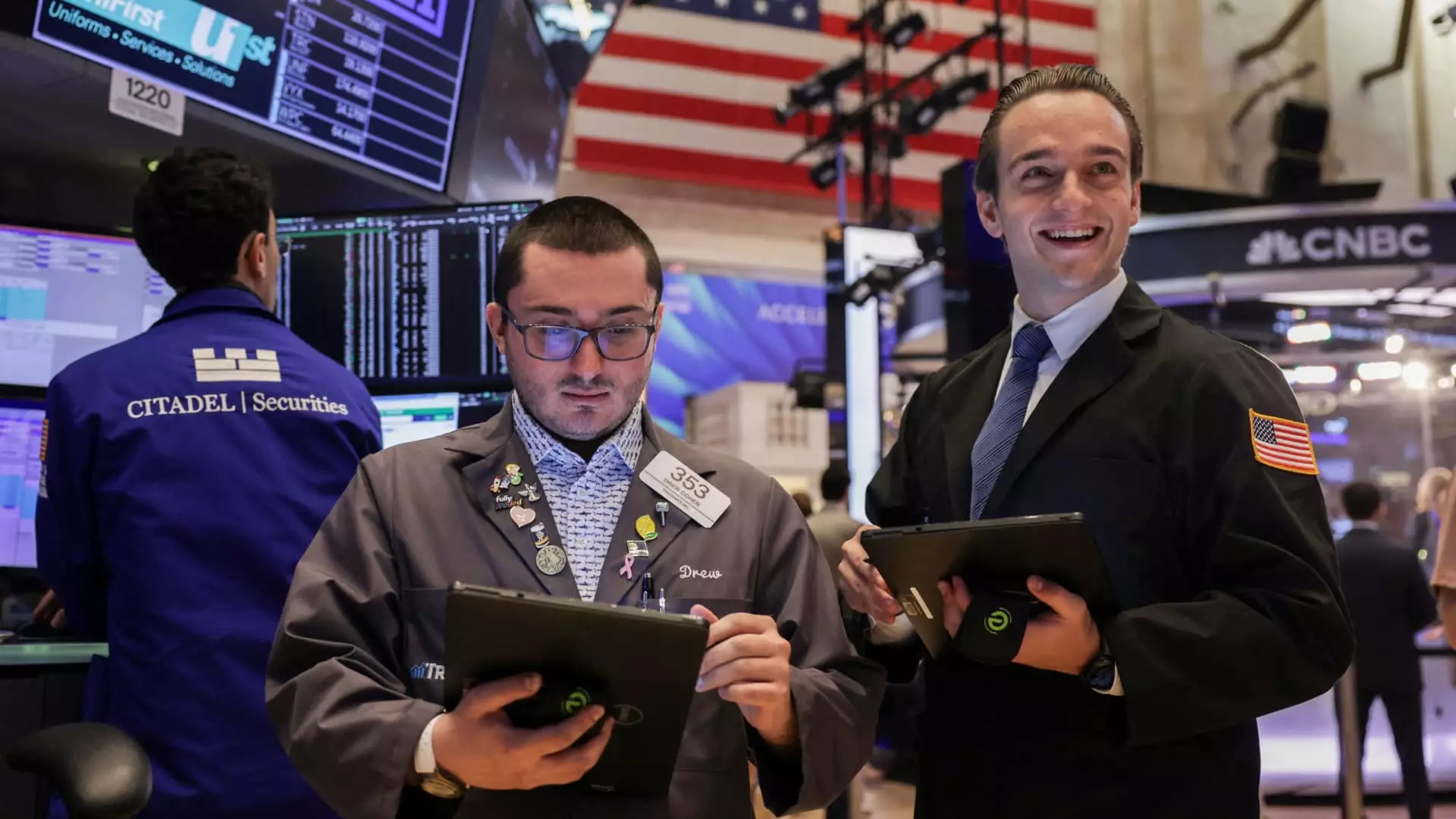The recent surge of the stock market, notably the S&P 500 edging toward record highs, may seem like a testament to economic strength. However, beneath this optimistic veneer lies a fragile foundation built on fleeting earnings beats and geopolitically influenced narratives. Investors have become increasingly enamored with what appears to be a persistent bull market, but a critical eye reveals that this optimism is often detached from the underlying economic realities. It is essential to question whether this rally is sustainable or merely a temporary spectacle driven by short-term gains and favorable soundbites.
Major indices like the S&P 500, Nasdaq, and Dow are basking in a string of record closes. Yet, these highs are often the product of market euphemisms—extraordinary earnings reports from giants like Alphabet and Verizon, which, despite delivering positive results, do not necessarily indicate broad economic vigor. The majority of S&P 500 companies have reported better-than-expected earnings, but this phenomenon is increasingly driven by cost-cutting and financial engineering rather than genuine growth. The illusion of prosperity persists as the market continues to inflate based on a handful of tech giants and corporate tax strategies rather than broad-based economic health.
Fundamentals or Faux Foundations?
Supporters of the current market rally argue that stable inflation and steady interest rates create a conducive environment for continued gains. However, this narrative often glosses over the deeper issues that threaten the sustainability of such growth. The so-called “favorable fundamentals” are compromised by geopolitical uncertainties, ranging from trade tensions to conflicts involving Russia, Ukraine, Israel, and Iran. The relentless focus on earnings numbers and trade agreements tends to distract from systemic risks lurking beneath the surface.
Recent trade deals, like the purported agreement between the U.S. and Japan or Indonesia, are presented as signs of economic diplomacy stabilizing markets. But these are mere Band-Aids on a wounded global economy haunted by tariff disputes and unpredictable geopolitical flashpoints. The announcement of a “massive” trade agreement or upcoming meetings between U.S. and European officials serve more as political appeasement than guaranteed economic fixes, leaving markets vulnerable to sudden shocks once the rhetoric fades. The belief that trade agreements will sustain growth ignores the deeper structural vulnerabilities facing the global economy—issues like inflationary pressures, supply chain disruptions, and the potential for renewed protectionist policies.
Pretending Policy Stability, Ignoring Warning Signs
While the Federal Reserve continues to hold interest rates steady, many observers dismiss the potential for future rate hikes or a shift in monetary policy, at their peril. The current “range-bound” rates mask a fragile equilibrium that could easily tip into turbulence. When policy remains unchanged, markets often interpret this as unwavering support; however, it could also reflect the Fed’s reluctance to confront underlying economic fragility or inflationary pressures that could re-emerge unexpectedly.
Moreover, investor complacency feeds a dangerous narrative that central bank intervention can indefinitely prop up trust in the markets. The truth is, monetary policy alone cannot sustain economic growth if fundamental issues like wage stagnation, inflationary disparities, and geopolitical risks remain unaddressed. Market participants have become overreliant on the hope that favorable earnings reports—often driven by accounting tricks—will persist indefinitely, ignoring the structural imperfections that threaten to undermine these gains.
The Specter of Overvaluation and the Illusion of Continuity
It is vital to recognize that the market’s recent highs are likely an overvaluation—a mirage created by a handful of dominant tech firms, speculative trading, and optimism fueled by optimistic commentary from strategists who are increasingly disconnected from the economic realities faced by everyday consumers and smaller firms. These record-breaking rallies can lure investors into a false sense of security, convincing them that the economy is on an unstoppable upward trajectory.
History suggests that parity between stock prices and actual economic fundamentals tends to erode when least expected. As the market awaits the flood of earnings reports from titans like Meta and Apple, the risk of disillusionment grows. What happens when these earnings disappoint or when geopolitical tensions escalate unexpectedly? The market’s resilience is less an indication of strength and more a temporary refuge that could collapse once external shocks expose its underlying vulnerabilities.
The current rally, therefore, should not be blindly celebrated. It is a reminder that markets often deceive us with their highs—built on momentum and superficial stability—while fundamental weaknesses fester beneath the surface. A healthy skepticism is needed to prevent complacency and to prepare for the inevitable correction that looms as the illusion of limitless growth dissipates.

Leave a Reply